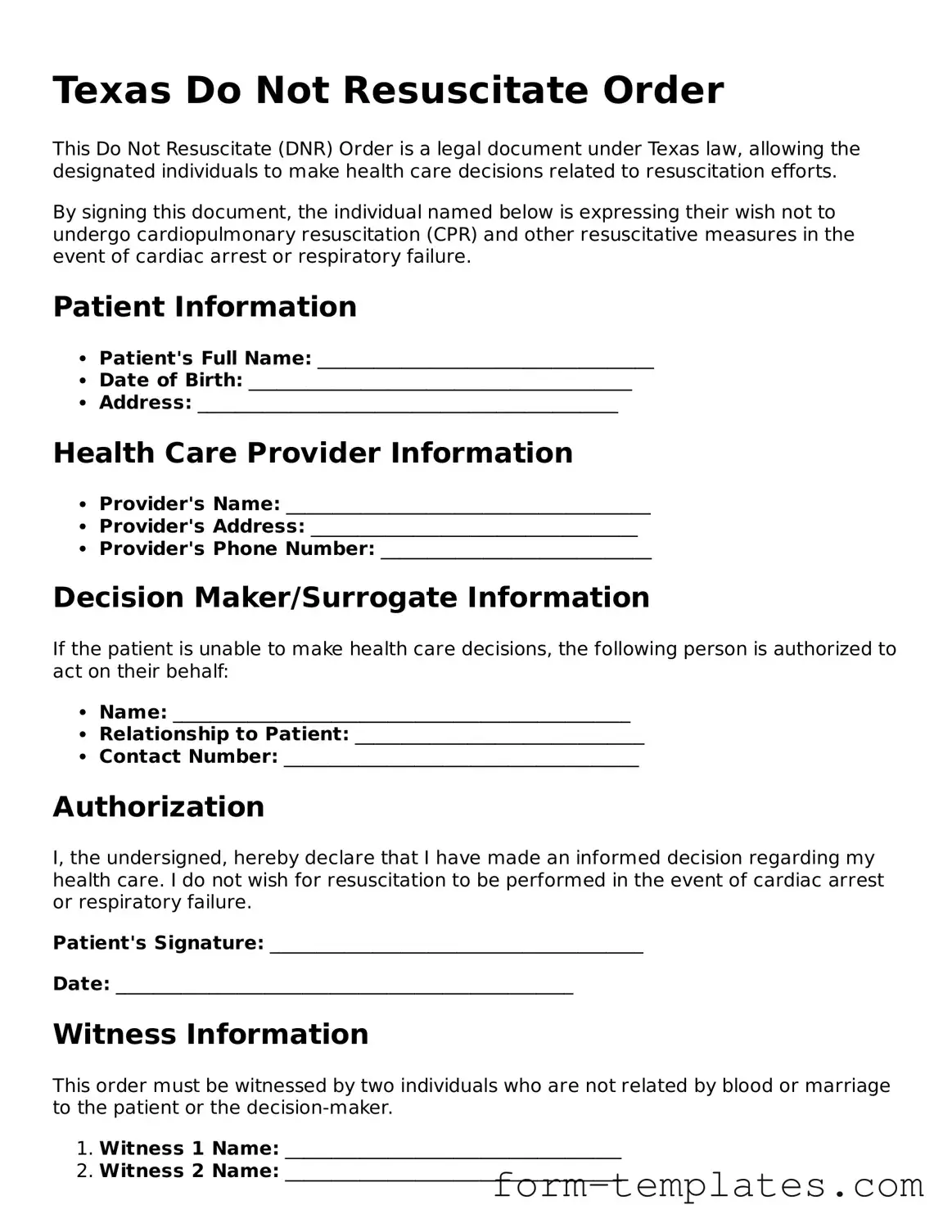Texas Do Not Resuscitate Order
This Do Not Resuscitate (DNR) Order is a legal document under Texas law, allowing the designated individuals to make health care decisions related to resuscitation efforts.
By signing this document, the individual named below is expressing their wish not to undergo cardiopulmonary resuscitation (CPR) and other resuscitative measures in the event of cardiac arrest or respiratory failure.
Patient Information
- Patient's Full Name: ____________________________________
- Date of Birth: _________________________________________
- Address: _____________________________________________
Health Care Provider Information
- Provider's Name: _______________________________________
- Provider's Address: ___________________________________
- Provider's Phone Number: _____________________________
Decision Maker/Surrogate Information
If the patient is unable to make health care decisions, the following person is authorized to act on their behalf:
- Name: _________________________________________________
- Relationship to Patient: _______________________________
- Contact Number: ______________________________________
Authorization
I, the undersigned, hereby declare that I have made an informed decision regarding my health care. I do not wish for resuscitation to be performed in the event of cardiac arrest or respiratory failure.
Patient's Signature: ________________________________________
Date: _________________________________________________
Witness Information
This order must be witnessed by two individuals who are not related by blood or marriage to the patient or the decision-maker.
- Witness 1 Name: ____________________________________
- Witness 2 Name: ____________________________________
Date Signed: _____________________________________
This Do Not Resuscitate Order is valid in Texas and is in accordance with Texas Health and Safety Code, Chapter 166.
